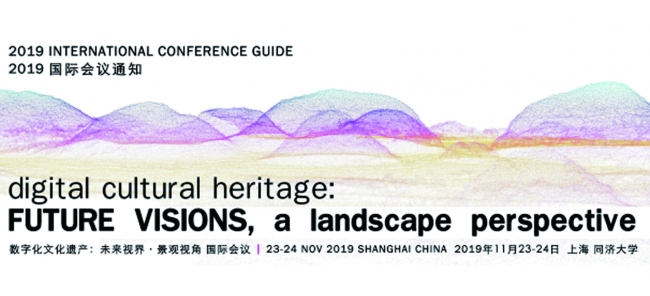| DIGITAL CULTURAL HERITAGE:FUTURE VISIONS, a landscape perspective |
| PublishDate:2019-10-09 Hits:1043 |
THEME The adoption of the Charter on the Preservation of Digital Heritage by UNESCO in 2003, formally expanded the concept of heritage to encompass cultural works and informational products either ‘created digitally, or converted into digital form’. The Charter was primarily a response to the concerns of institutions appointed to maintain repositories of public knowledge, such as museums, libraries and archives. The Charter affirms the role of such institutions and acknowledges opportunities to broaden access to historic resources through digital technologies. It also recognises the risks posed by technological obsolescence and the need to address supportive legislation for digital heritage. The Charter’s focus has, however, since been criticised for taking too narrow a view of what has become a rapidly progressing environment of digital tools, technologies and applications.
The concept of heritage also expanded with the recognition of cultural landscapes as a distinct category of World Heritage in 1992. This was followed by the adoption of UNESCO’s Convention for the Safeguarding the Intangible Cultural Heritage in 2003, and Recommendation on the Historic Urban Landscape in 2011. While not as technologically seductive as the digital environment, cultural landscapes present unique preservation, presentation and sustainability issues associated with their spatial, temporal and intangible heritage qualities. The cultural landscape concept has similarly received criticism. Through failure to adequately articulate the dynamic nature of cultural heritage, the concept remains essentially conservation-driven and lacks the descriptive precision necessary to position cultural landscapes within mainstream planning and development frameworks.
Driven by these developments and criticisms, there has been significant interest in both digital heritage and cultural landscapes over recent years. The junction between the two, however, remains essentially under-explored. Digital technologies can improve conservation documentation and preservation techniques, enhance interpretation with interactive media, enrich archives with sensory experiences, and augment histories with crowdsourced data. Cultural landscapes can epitomise the nexus between cultural and natural heritage, acknowledge significant human interaction with environments over time, and recognise enduring intercultural dialogue across space, time and societies. Yet both can also provoke questions about authenticity, ownership and value, and challenge the concept of ‘living heritage’ and the sustainability of heritage values.
This conference seeks to explore the multiple implications and theoretical challenges of digital technologies for cultural landscapes. The conference will focus less on descriptive projects and more on how digital technologies can contribute to debates about the relationship between the cultural and natural past, present and future. What do we capture, commodify and experience using digital technologies and why? How are dynamic cultural landscapes interpreted, negotiated and represented and for whom? When should cultural landscapes be protected for future generations and how can they be managed sustainably for the present? The conference will focus on the emerging disciplines of digital cultural heritage and the established practice of heritage management, providing a platform for critical debate between those developing and applying innovative digital technology, and those seeking to integrated best practice into the preservation, presentation and sustainable management of historic cultural landscapes.
For more details, please click: http://www.whitr-ap.org/index.php?mod=news&classid=1461&newsid=3089&t=show |
|
|
- Call for Application | 2024 Global Awards for World Heritage Education Innovative Cases(AWHEIC) Promoting what people do and how they do it
- Documentary: 2023 World Heritage Creative X Innovators Conference and the AWHEIC Third Anniversary Celebration
- Publication | WHITRAP Newsletter No. 61
- Mt. Huangshan first show in Climate Action for World Heritage
- Call for Good Practices: 2024 Environment and Resilience
- FAQs | 2024 Call for Good Practices
Copyright © 2009-2012 World Heritage Institute of Training and Research-Asia and Pacific (shanghai)



